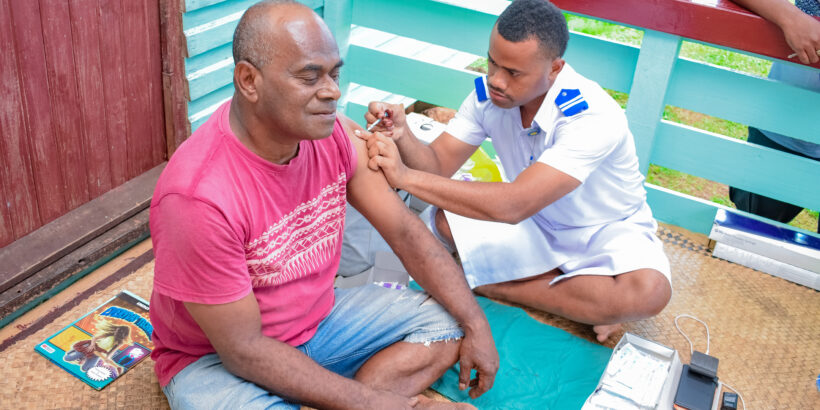Typhoid is a persistent health threat in areas that lack access to clean water, sanitation, and hygiene. The threat is intensified in areas at risk of climate-related events like flooding. Controlling typhoid demands a multi-pronged strategy—one that combines surveillance and prevention with typhoid conjugate vaccines (TCVs) and improved access to water and sanitation.
I lead the International Vaccine Institute’s Typhoid in Fiji – Vaccination towards Elimination (Ty-FIVE) project in Fiji’s Northern Division. At this year’s Annual Meeting of the American Society of Tropical Medicine and Hygiene (ASTMH), I’ll be presenting on Fiji’s approach to controlling typhoid with enhanced disease surveillance alongside a mass vaccination campaign.
Stopping outbreaks before they start
TCVs are highly effective tools to prevent typhoid. They provide long-lasting immunity, including against drug-resistant strains, and can be given to children as young as 6 months of age.
In July 2023, Fiji launched a mass TCV campaign that aimed to vaccinate nearly 135,000 people aged 9 months to 65 years in the country’s Northern Division. The campaign marked an exciting step towards reducing typhoid burden in Fiji, but the work didn’t stop once the campaign concluded. Another goal of the Ty-FIVE project is to strengthen typhoid surveillance with improved reporting, sampling, and contact tracing.
By boosting typhoid surveillance programs, we’ve been able to detect more cases, including asymptomatic carriers. Having real-time, reliable data on typhoid disease patterns enables us to detect and respond to outbreaks faster.
To build on this effort, our teams have been monitoring waterways across the Northern Division monthly since September 2022, collecting samples to detect Salmonella DNA. While clinical surveillance tracks reported cases, environmental surveillance brings in another angle by tracking the presence of S. Typhi in various waterways. By bringing these two approaches together, we aim to create a more complete picture of typhoid transmission and the impact of TCV introduction. Early findings are encouraging, showing a drastic reduction in both clinical cases and environmental prevalence of Salmonella DNA following the vaccination campaign.
Now is the time to take on typhoid
Typhoid prevention has never been more critical. Climate change and rising ocean temperatures are raising the risk of extreme weather like cyclones and hurricanes, which can devastate water, sanitation, and hygiene infrastructure and lead to outbreaks of waterborne diseases like typhoid. At the same time, drug-resistant typhoid is on the rise, which complicates treatment and can require intravenous antibiotics that are more expensive and less readily accessible in many countries.
In Fiji, the Ty-FIVE project is taking on these challenges—both through the country’s mass TCV campaign in 2023 and through ongoing disease surveillance. By staying vigilant and focusing on prevention, we can stamp out typhoid for good.
A global effort
Typhoid is endemic in many countries across the globe, and Fiji is not alone in facing the disease. From responding to extremely drug-resistant typhoid outbreaks in Pakistan to using geospatial mapping in dense urban areas of Malawi, dozens of researchers will be sharing their own innovative approaches at ASTMH this week.
If you are in Toronto, come learn about typhoid prevention and response, case management, vaccine and cost effectiveness, drug resistance, vaccine impact, boosters, typhoid intestinal perforations, systematic reviews, and more. You can see the schedule of typhoid related sessions here: Take on Typhoid at ASTMH 2025 – Take on Typhoid.
Fiji’s experience—alongside the many other countries prioritizing their typhoid surveillance programs—offers valuable lessons for global efforts to eliminate typhoid and protect communities from this disease.



